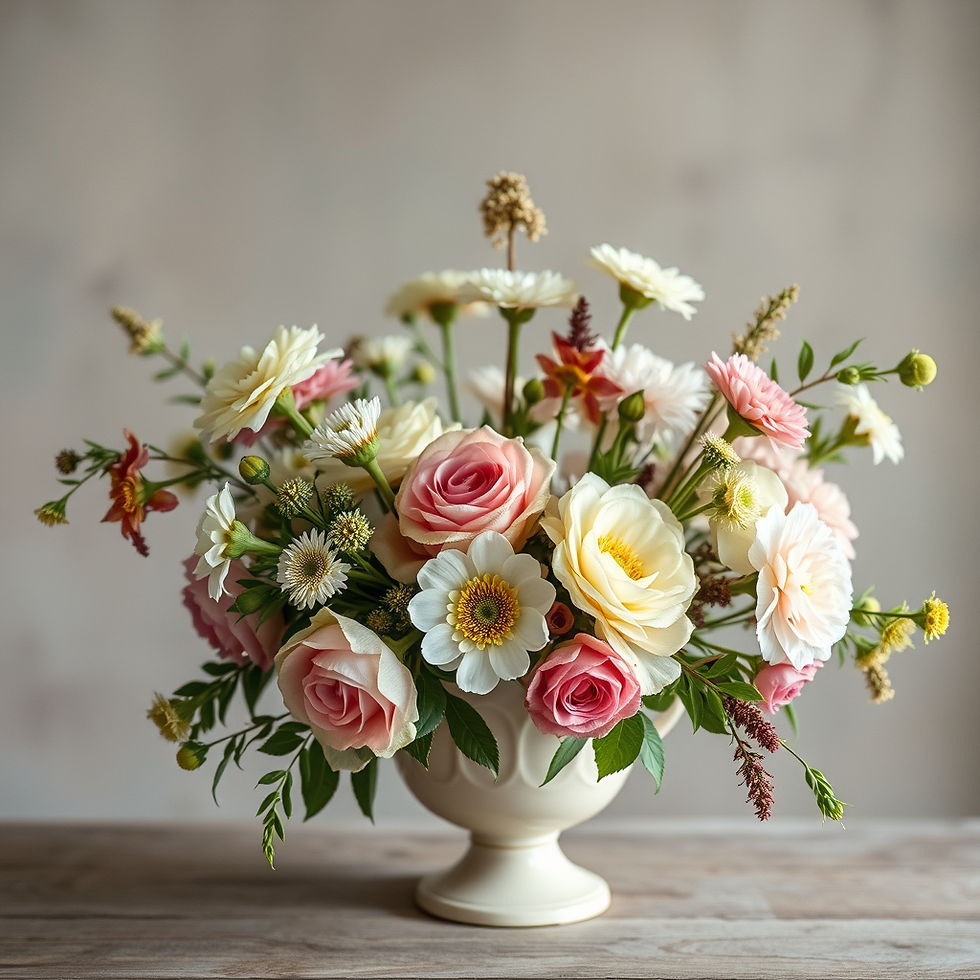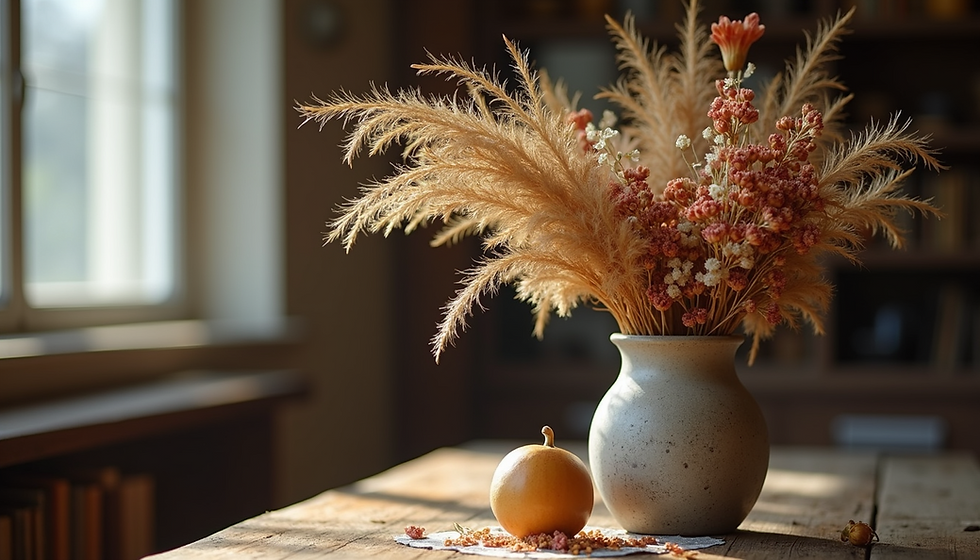Why Floral Foam is Bad for the Environment and Sustainable Alternatives
- Blossom & Cloth

- Aug 14
- 3 min read

Floral foam has long been a staple in the floral industry for creating stunning arrangements. However, its environmental impact has raised concerns among eco-conscious florists and consumers. This blog post explores why floral foam is harmful to the environment and offers sustainable alternatives for creating beautiful, planet-friendly floral designs.
The Environmental Impact of Floral Foam
1. Non-Biodegradable Composition
Floral foam is typically made from phenolic foam, a petroleum-based plastic that does not biodegrade. Once discarded, it persists in landfills for hundreds of years, contributing to long-term waste accumulation. Even "biodegradable" floral foams often break down into microplastics, which can pollute soil and waterways.
2. Microplastic Pollution
When floral foam is cut, handled, or disposed of, it crumbles into tiny particles. These microplastics can end up in water systems, harming marine life and entering the food chain. Studies have shown that microplastics are a growing threat to ecosystems, with particles found in everything from fish to drinking water.
3. Toxic Chemicals
The production and use of floral foam involve chemicals like formaldehyde and carbon black, which are harmful to both human health and the environment. When soaked in water, floral foam can release these toxins, potentially contaminating water sources and affecting aquatic ecosystems.
4. Single-Use Nature
Floral foam is designed for single use, making it a wasteful product. After one arrangement, it’s typically discarded, adding to the growing problem of single-use plastics in the environment. The floral industry’s reliance on this product exacerbates its environmental footprint.
5. Carbon Footprint
The manufacturing process for floral foam is energy-intensive and relies on non-renewable resources like petroleum. This contributes to greenhouse gas emissions, further exacerbating climate change.
Sustainable Alternatives to Floral Foam
Fortunately, there are eco-friendly alternatives that allow florists to create stunning arrangements without harming the planet. Here are some sustainable options:
1. Reusable Floral Frogs
Floral frogs, also known as pin holders or kenzan, are metal or ceramic devices with spikes that hold stems in place. They are reusable, durable, and work well for a variety of arrangements. Pair them with a shallow dish or vase for a sustainable, long-lasting solution.
2. Chicken Wire or Mesh
Chicken wire or floral netting can be shaped into a ball or laid flat to create a structure for holding flowers. This reusable material is easy to work with and can be recycled at the end of its life. It’s particularly effective for larger installations or loose, natural arrangements.
3. Natural Materials
Natural materials like moss, twigs, or straw can be used to create a base for arrangements. These biodegradable options add texture and an organic aesthetic while breaking down naturally after use.
4. Water Tubes and Vials
For arrangements that require hydration without foam, water tubes or vials can keep individual stems fresh. These small containers are reusable or recyclable and work well for boutonnieres, corsages, or minimalist designs.
5. Compostable Bases
Some companies now offer compostable alternatives, such as bases made from coconut coir, wool, or straw. These materials decompose naturally and provide a sustainable option for holding flowers in place.
6. Vases and Containers
Using vases, bowls, or other containers filled with water eliminates the need for foam entirely. Creative designs with pebbles, sand, or glass beads can add stability and aesthetic appeal while keeping arrangements hydrated.
Tips for Transitioning to Foam-Free Floristry
Educate Yourself and Clients: Learn about foam-free techniques and share their benefits with clients to encourage sustainable choices.
Experiment with Designs: Practice using alternatives like floral frogs or chicken wire to build confidence in foam-free arranging.
Source Locally: Use locally grown, seasonal flowers to reduce the carbon footprint of your arrangements.
Recycle and Reuse: Incorporate reusable materials into your designs and recycle any metal or plastic components appropriately.
Conclusion
Floral foam’s convenience comes at a significant environmental cost, from its non-biodegradable nature to its contribution to microplastic pollution. By embracing sustainable alternatives like floral frogs, chicken wire, and natural materials, florists can create beautiful arrangements that align with eco-conscious values. Making the switch to foam-free floristry not only benefits the planet but also inspires creativity and innovation in floral design. Let’s work together to make the floral industry greener, one arrangement at a time!




Comments